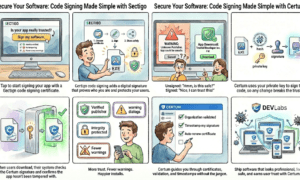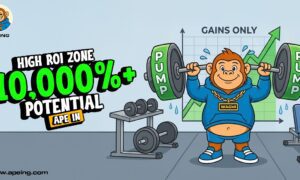Customer Relationship Management (CRM) systems have become indispensable tools for modern businesses, bridging the gap between sales and marketing departments. By leveraging CRM technology, companies can align their sales and marketing goals, streamline operations, and enhance customer engagement. Here are five key ways CRM aligns sales and marketing goals:
1. Enhanced Data Sharing and Collaboration
One of the CRM system’s most significant benefits is its ability to centralize and share data across departments. This unified database ensures that sales and marketing teams access the same customer information, enabling better collaboration and alignment.
a. Unified Customer Profiles
CRM systems create comprehensive customer profiles by integrating data from various sources, including social media, website interactions, and previous purchases. This holistic view allows sales and marketing teams to understand customer behavior and preferences, facilitating more personalized and targeted strategies.
b. Real-time Data Access
With CRM, both departments can access real-time data, ensuring the latest information is always at their fingertips. This real-time access is crucial for making informed decisions quickly, allowing teams to promptly respond to customer needs and market changes.
c. Improved Communication
A CRM system fosters better communication between sales and marketing teams. Regular updates and shared insights help prevent silos, ensuring that both teams are working towards common goals. For example, marketing can provide sales with insights on campaign performance, while sales can offer feedback on lead quality.
2. Streamlined Lead Management
Effective lead management is crucial for aligning sales and marketing efforts. A CRM system helps streamline this process, ensuring that leads are properly nurtured and handed off between teams at the right time.
a. Lead Scoring and Qualification
CRM systems can automate lead scoring based on predefined criteria like engagement level, demographics, and behavioral data. This ensures that marketing only passes high-quality leads to the sales team, increasing the likelihood of conversion.
b. Lead Nurturing Campaigns
With CRM, marketing teams can set up automated nurturing campaigns to engage leads over time. These campaigns can include personalized emails, targeted content, and follow-up reminders, ensuring that leads remain engaged until they are ready to purchase.
c. Seamless Handoff
A CRM system facilitates a seamless handoff of leads from marketing to sales. When a lead reaches a particular score or engages in specific behaviors, the system can automatically notify the sales team, ensuring that no opportunities are missed.
3. Alignment of KPIs and Metrics
To work effectively together, sales and marketing teams must be aligned on key performance indicators (KPIs) and metrics. A CRM system helps establish and track these metrics, ensuring that both teams work towards the same goals.
a. Shared Goals and Objectives
By defining shared goals and objectives within the CRM, sales and marketing teams can focus on what matters most. This alignment ensures that marketing campaigns are designed to generate leads that sales can convert and that marketing insights inform sales strategies.
b. Performance Tracking and Reporting
CRM systems offer robust reporting capabilities, allowing both teams to track performance against set KPIs. These reports can include metrics such as lead generation, conversion rates, and customer acquisition costs, clearly showing how well the teams are performing.
c. Continuous Improvement
With access to shared data and performance reports, sales and marketing teams can continuously refine their strategies. Regular reviews of CRM data help identify areas for improvement, ensuring that both teams are constantly optimizing their efforts.
4. Enhanced Customer Insights and Personalization
Understanding customer needs and preferences is essential for both sales and marketing success. A CRM system provides deep insights into customer behavior, enabling both teams to create more personalized and effective strategies.
a. Behavioral Tracking
CRM systems can track customer interactions across various touchpoints, including website visits, email opens, and social media engagements. This data helps both teams understand customer interests and behaviors, allowing for more targeted marketing and sales approaches.
b. Segmentation and Targeting
With detailed customer data, CRM systems enable advanced segmentation and targeting. Marketing teams can create particular segments based on demographics, behavior, and purchase history, ensuring their campaigns are relevant and impactful.
c. Personalized Sales Approaches
CRM insights allow for more personalized interactions with prospects and customers for sales teams. Sales representatives can tailor their pitches based on the customer’s past interactions and preferences, increasing the likelihood of a successful sale.
5. Improved Customer Journey Management
Managing the customer journey effectively requires close coordination between sales and marketing. A CRM system helps map the entire customer journey, ensuring that both teams are aligned at every stage.
a. Journey Mapping
CRM systems can help visualize the customer journey, from initial contact to purchase. This mapping allows both teams to understand where customers are in the buying process and what actions are needed to move them forward.
b. Consistent Messaging
With a clear view of the customer journey, sales and marketing teams can ensure their messaging is consistent and aligned. This consistency is crucial for building trust and maintaining a cohesive brand experience.
c. Customer Feedback and Adaptation
A CRM system enables customer feedback collection at various stages of the journey. This feedback can inform sales and marketing strategies, ensuring the teams can adapt and improve their approaches based on real customer insights.
CISO Events
Chief Information Security Officer (CISO) events are essential for businesses seeking to stay ahead of the latest cybersecurity threats and trends. These events bring together security experts, industry leaders, and technology providers to discuss the most pressing issues in information security. Attending CISO events in 2024 can provide valuable insights into emerging security technologies, best practices for protecting customer data, and strategies for mitigating cyber risks. For businesses that rely on CRM systems to manage sensitive customer information, staying informed about the latest security trends and solutions is crucial. By participating in CISO events, companies can ensure their CRM systems are secure, compliant with industry regulations, and capable of protecting customer data from potential breaches. This proactive approach to cybersecurity helps build trust with customers and supports the overall goal of aligning sales and marketing efforts.
Conclusion
In today’s competitive business environment, aligning sales and marketing goals is more important than ever. A CRM system provides the tools and insights needed to bridge the gap between these two critical functions, ensuring that both teams can work together effectively to drive business growth. CRM systems play a pivotal role in aligning sales and marketing goals by enhancing data sharing, streamlining lead management, aligning KPIs, providing deep customer insights, and improving customer journey management. Implementing a robust CRM strategy is not just about adopting new technology; it’s about fostering a culture of collaboration and continuous improvement, ultimately leading to a more unified and successful business.
Additional Considerations
To maximize the benefits of a CRM system, companies should consider the following:
- Training and Adoption
- Ensure that sales and marketing teams are adequately trained on the CRM system. Adoption is crucial for the system’s success, so continuous training and support are necessary.
- Integration with Other Tools
- Integrate the CRM system with other marketing and sales tools, such as email marketing platforms, social media management tools, and analytics software. This integration provides a more comprehensive view of customer interactions and enhances the effectiveness of both teams.
- Customization
- Customize the CRM system to meet the specific needs of your business. This includes setting up custom fields, workflows, and reports that align with your sales and marketing processes.
- Regular Review and Optimization
- Review and optimize your CRM strategy regularly. This includes analyzing performance data, gathering user feedback, and making necessary adjustments to improve efficiency and effectiveness.
AutoStore Systems
For businesses looking to enhance operational efficiency, AutoStore systems offer a compelling solution by expanding storage capabilities while reducing energy consumption and saving space. AutoStore is an automated storage and retrieval system that optimizes warehouse operations using a grid-based layout with robots that efficiently store and retrieve items. This technology allows businesses to maximize their storage density, minimize their warehouse footprint, and reduce energy costs through its highly efficient design. Integrating AutoStore with a CRM system can further streamline inventory management and order fulfillment processes, ensuring that sales and marketing teams have accurate and up-to-date information about product availability and delivery times. By leveraging AutoStore systems, companies can improve operational efficiency, reduce costs, and enhance overall customer satisfaction.
By addressing these considerations, businesses can ensure that their CRM system truly supports aligning sales and marketing goals. This will lead to improved collaboration, better customer experiences, and greater business success.
Read More From Techbullion And Businesnewswire.com



































